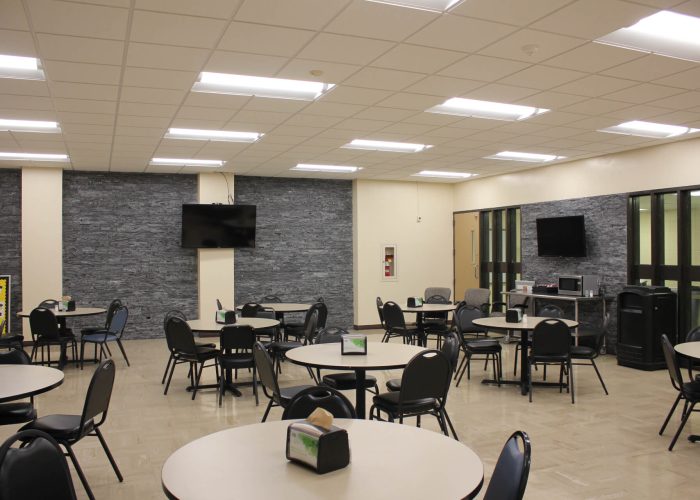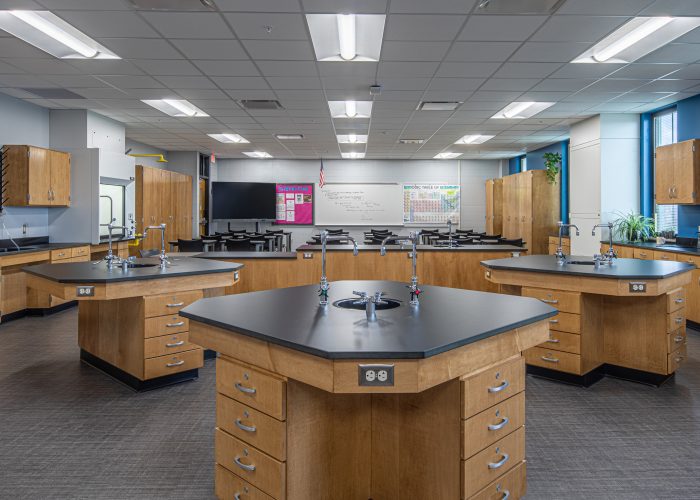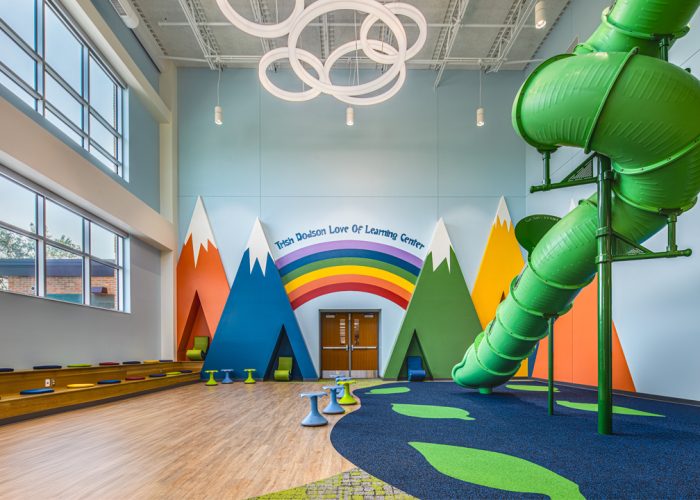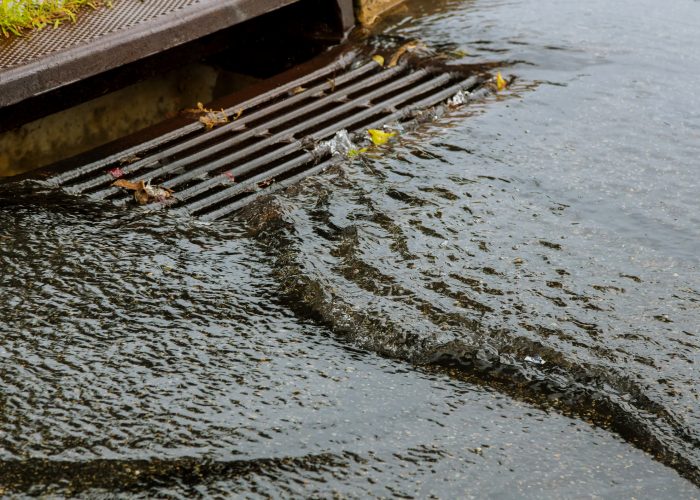Improved efficiencies and declining costs have resulted in greater use of LEDs in interior applications, but it is their versatility and durability that is the most appealing.
Why Install LEDs in Interior Fixtures?
There are a few factors making LEDs the top choice for use in interior lighting applications. The most important being their energy efficiency. They use less energy per watt than incandescent and fluorescent bulbs and can last for as long as 60,000 hours. In addition, they offer improved light quality. They are much brighter and come to full brightness instantly. Together, these factors mean improved light levels and quality as well as reduced electricity usage and maintenance costs!
How do LEDs impact the learning environment?
High-quality, task-appropriate lighting in schools is an important part of providing an optimal learning environment for students. With larger pupils and greater circadian rhythm sensitivity, lighting can directly impact alertness and academic performance among adolescents. Bright luminescent light, such as LEDs, helps students to see whiteboards, read, write, and participate in classroom activities. LEDs can also be dimmed to accommodate for learning conducted on electronic devices such as iPads and tablets.
Can my current fixtures be retrofitted for LEDs?
LEDs are versatile and come in a range of sizes, wattages, shapes, and colors, and do not require ballasts, accommodating a variety of lighting needs. As a result, LEDs can be retrofitted into existing fixtures to replace incandescent or fluorescent bulbs. This involves identifying the base type and selecting an LED with a matching socket.
Can LEDs replace tubular fluorescent lighting?
It is most common to replace tubular fluorescents (T8 or T12) with LEDs, including 2’x4’ and 2’x2’ lay-in troffer fixtures. For example, four lamp tubular fluorescent fixtures with two ballasts can be modified to use two or three LED lamps and achieve the same light quality. Similarly, three lamp fixtures can often be modified to use two LED lamps.
In environments where light levels are not critical, the entire fixture can be replaced with a single LED lamp fixture. Additionally, reflectors can be installed to direct the light to task and improve fixture efficiency. Reflective white paint, silver film laminate, or anodized aluminum is typically used.
Where do LEDs work best?
Quality lighting is crucial for schools, hospitals, and office buildings as part of an optimal learning/working environment. LEDs are a great choice for these environments because of their efficiency, flexibility, and longevity. Some specific interior applications include:
- Area lighting
- Spot and strip lighting
- Track lighting
- Recessed downlights
- Specialty lighting (colored, dimmable, etc.)
With a variety of options for interior use and retrofit, LEDs are now the preferred lighting solution. They can easily be utilized and retrofitted into current fixtures to increase energy efficiency and reduce maintenance costs. As with all technology, these benefits will only continue increasing over time, as new improvements will make LEDs even more efficient and versatile.





